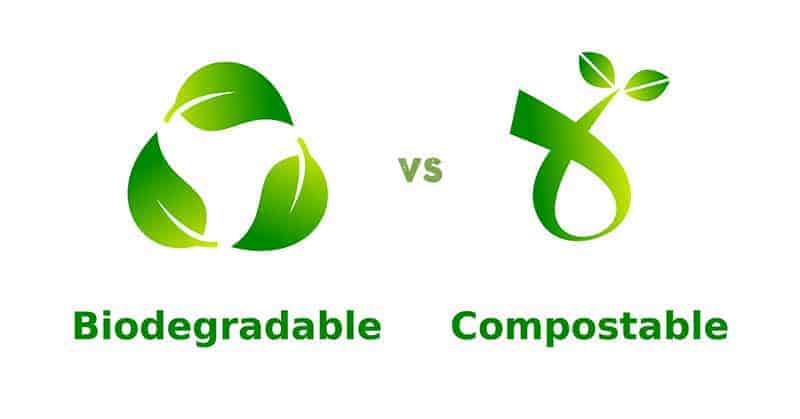
Compostable vs Biodegradable Packaging Materials: What Are the Differences?
With more awareness of the effects that pollution has on the environment, there are more eco-friendly packaging options available than ever before. Though this is good in some ways, it can also be confusing because the terms used to describe them sound similar but mean very different things. Some people use the terms interchangeably, which makes it even more difficult to determine the effect, whether positive or negative, that the material can have on the environment.
Two of the terms that are commonly ascribed to packaging include compostable and biodegradable. Each refers to the ability of material to break down. The differences lie in the conditions under which this can happen, the time frame in which it occurs, and the end product that results.
What Is Compostable Packaging?

Compostable packaging materials are made of elements derived from living organisms. Under the right conditions, these materials will decompose into an organic material that can be added to the soil to provide nutrients that plants need to grow. For example, compostable QR code packaging breaks down into organic materials within about six months, but only under the correct conditions.
When it comes to compostable plastics, there are two different kinds. Some are home compostable, meaning that if you have your own compost bin, you can put the packaging into it and it will break down into soil in due time. However, others are industrial compostable types. This packaging requires high temperatures, up to 140 degrees Fahrenheit, in order to break down. Therefore, it has to be taken to an industrial composting facility. If you attempt to put industrial compostable plastic into a home composting bin, it won’t break down.
What Is Biodegradable Packaging?
Biodegradable packaging breaks down when exposed to bacteria and other natural elements. It does not add nutrients to the soil, but it can help to reduce waste in landfills. There is no set time frame in which the material is expected to biodegrade. Some packaging materials, such as corrugated cardboard, are naturally biodegradable.

Ordinary plastics are not biodegradable, meaning that they can remain in landfills for hundreds or even thousands of years, which is a major environmental problem. Some plastics are advertised as biodegradable, but unfortunately, this doesn’t necessarily mean that they are eco-friendly. Biodegradable plastic packing materials may still take many years to break down in a landfill. Sometimes they have been treated with a chemical that can accelerate this process, but even then it can take decades. The chemical may contaminate the soil, and even when the plastic breaks down, it can form micro-plastics, which pose their own environmental risks. Furthermore, certain conditions need to be met for biodegradable plastic to break down. If these conditions are not present in the landfill, the “biodegradable” plastics may remain as long as their counterparts.
How Can You Tell Whether the Packaging Is Sustainable?
The labeling can be deceiving as some companies disingenuously market their product in eco-friendly terms to persuade people to buy. Sustainable snack packaging receives certifications from government agencies or other reputable organizations to ensure that it can deliver on what its labels promise. Be aware of attempts to deceive and always investigate the packaging before purchasing it.




